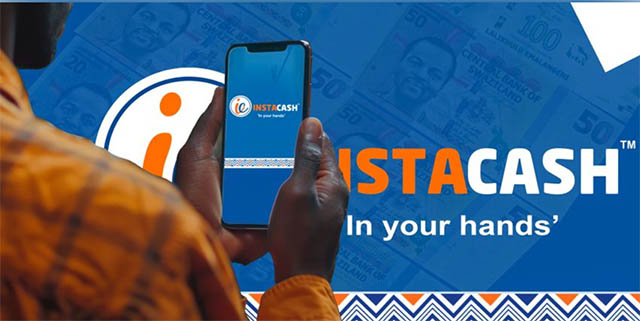
A Nairobi-designed digital wallet service is nipping at the heels of Eswatini’s mainstream banks and telcos, proving that African expansion can be a gainful strategy for Fintech startups.
SPECIAL REPORT | BIRD AGENCY | Instacash, a mobile money platform, has begun to break the decades-long hold of traditional banks and telecommunications providers in Eswatini’s financial sector.
Just two years after launch, the fintech developed by Kenya’s Directcore Technologies has made significant inroads into the southern African Kingdom.
The non-telco operator has already captured over 200,000 users, representing more than 16.67% of the country’s population and has begun to upend the market where five banks — including three South African institutions — have long controlled access to financial services.
Its fast-growing adoption rate hints at a potential M-PESA-like effect in Eswatini as young users embrace mobile financial solutions.
“We saw an opportunity in the underserved market,” Mandla Nxumalo, Managing Director of Instacash told reporters in Nairobi.
“With only 30% of the population formally employed, traditional banking wasn’t meeting the needs of the broader population.”
Its independence from telecom operators allows the platform to offer full interoperability on both MTN Eswatini and Eswatini Mobile, which together provide for 99% of the market.
This flexibility has made the platform particularly attractive in a market where telecom-backed mobile money services like MTN Momo previously held sway.
By providing financial access via basic GSM and 2G networks, InstaCash appealed even to those without internet connectivity, a crucial feature in Eswatini’s largely rural population.
Instacash seems to have found a receptive regulator in eSwatini, something that many African Fintech startups have had trouble with when expanding across the continent.
“The ecosystem lacks product diversity across the FinTech verticals and market enablers. In sum, there is a dearth of local actors, alternative regulatory instruments and sustainable funding sources to develop a FinTech ecosystem,” a recent eSwatini Central Bank report reads.
Its presence in the market has led to regulatory changes. The platform’s unique telco-agnostic status forced Eswatini’s regulators to revise how mobile money services are licensed and overseen, separating telecom businesses from their financial services arms.
“We changed how mobile money is regulated in this country,” Nxumalo said.
“After we entered the market, telcos had to split their mobile money and telecom operations to ensure a level playing field.”
Despite its recent entry, InstaCash is already the second-largest player in Eswatini’s mobile money market and while the country has a relatively small population, there is plenty of room for growth.
Eswatini Fintech Landscape Report 2023 credits the country’s 87% financial inclusion to mobile money services. That is up from 44% in 2010.
According to Finscope data, as of 2018, 48.4% of EmaSwati are women and 51.6% use financial products and services, are educated, live in mostly in rural locations and are active in the agriculture and trade sectors.
With the majority of the population still unbanked and underserved by traditional banks, there remains considerable scope for expansion.
bird story agency
 The Independent Uganda: You get the Truth we Pay the Price
The Independent Uganda: You get the Truth we Pay the Price



